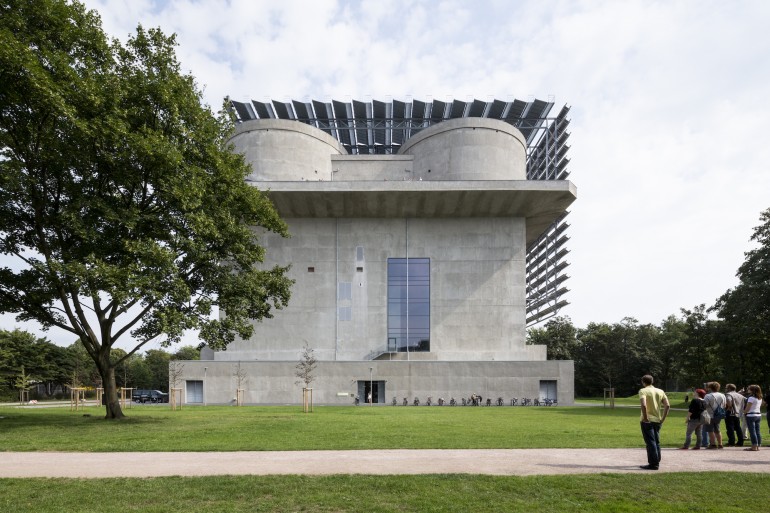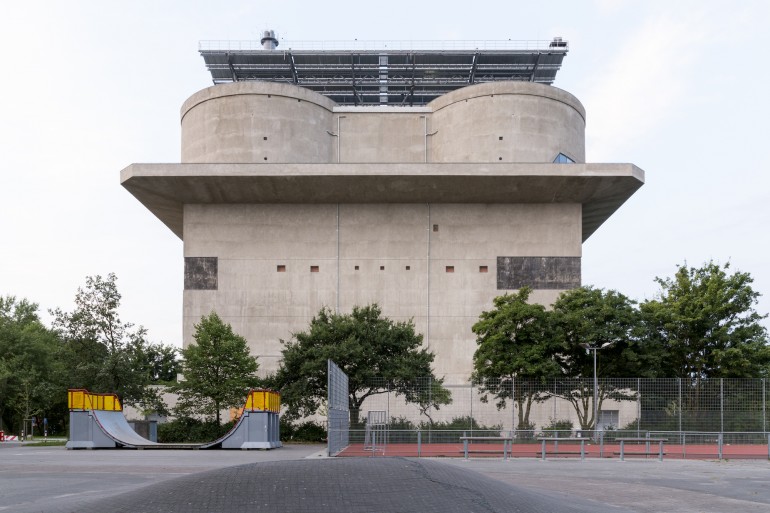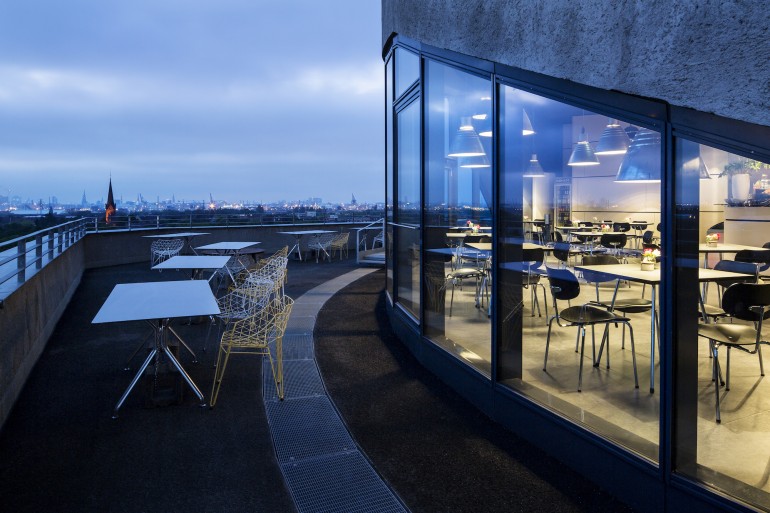In 1943, an anti-aircraft bunker was constructed by the Nazis in Hamburg, Germany. Some 70 years later, the structure is supplying power to more than 4,000 homes in the area.
Utility company Hamburg Energie partnered with IBA Hamburg to transform the building. The new "Energy Bunker" is already producing energy for the local community and will eventually provide heating to 3,000 homes and electricity to 1,000 others.
The anti-aircraft bunker had gun turrets to fend off Allied attacks, but also sheltered local people inside during air raids. At the end of WWII, the British wanted to destroy the building entirely, but demolishing the thick concrete walls likely would have damaged surrounding buildings. Instead, the British did away with most of the interior and left the exterior alone. The building remained this way for over 60 years, according to gizmag.
The original planning for the plant began in 2006, with actual renovation beginning in 2011. Funded by the European Regional Development Fund and the Hamburg Climate Protection Concept, the project came to approximately $36 million.
A 2 million-liter water reservoir plugs into the existing Reiherstieg heating network and will serve as a heat store for the plant. The plant features multiple heat sources: a biomass power plant; woodchip burning unit, which feeds into a large boiler; a solar thermal array located on the roof of the bunker; and waste heat from a nearby industrial plant.
To produce electricity, a photovoltaic system is installed on the building's southern facade; the wood burning unit that heats the reservoir doubles as an electricity-producing unit. The energy output is kept steady by a peak-load boiler and battery array.
In addition to the power plant, the building also includes a war memorial, cafe, and visitor's center.
Related Stories
| Aug 11, 2010
LEED 2009 cites FloorScore Certification as indicator of indoor air quality
The U.S. Green Building Council (USGBC) has cited FloorScore® certified flooring products as eligible for credits under the new LEED 2009 Version 3 guidelines. Reflecting the inclusion of FloorScore, the new LEED IEQ Credit 4.3 for Low-Emitting Materials has been expanded from “Carpet Systems” to “Flooring Systems” to include hard surface flooring.
| Aug 11, 2010
Billings at U.S. architecture firms exceeds $40 billion annually
In the three-year period leading up to the current recession, gross billings at U.S. architecture firms increased nearly $16 billion from 2005 and totaled $44.3 billion in 2008. This equates to 54 percent growth over the three-year period with annual growth of about 16 percent. These findings are from the American Institute of Architects (AIA) Business of Architecture: AIA Survey Report on Firm Characteristics.
| Aug 11, 2010
CHPS debuts high-performance building products database
The Collaborative for High Performance Schools (CHPS) made a new tool available to product manufacturers to help customers identify building products that contribute to sustainable, healthy, built environments. The tool is an online, searchable database where manufacturers can list products that have met certain environmental or health standards ranging from recycled content to materials that contribute to improved indoor air quality.
| Aug 11, 2010
29 Great Solutions for the AEC Industry
AEC firms are hotbeds of invention and innovation to meet client needs in today's highly competitive environment. The editors of Building Design+Construction are pleased to present 29 "Great Solutions" to some of the most complex problems and issues facing Building Teams today. Our solutions cover eight key areas: Design, BIM + IT, Collaboration, Healthcare, Products, Technology, Business Management, and Green Building.
| Aug 11, 2010
ASHRAE research targets tying together BIM and energy efficiency
Ensuring that a common language of “energy efficiency” is spoken by both building information modeling software used by architects and energy analysis and simulation software used by engineers is the goal of new research funded by ASHRAE.









